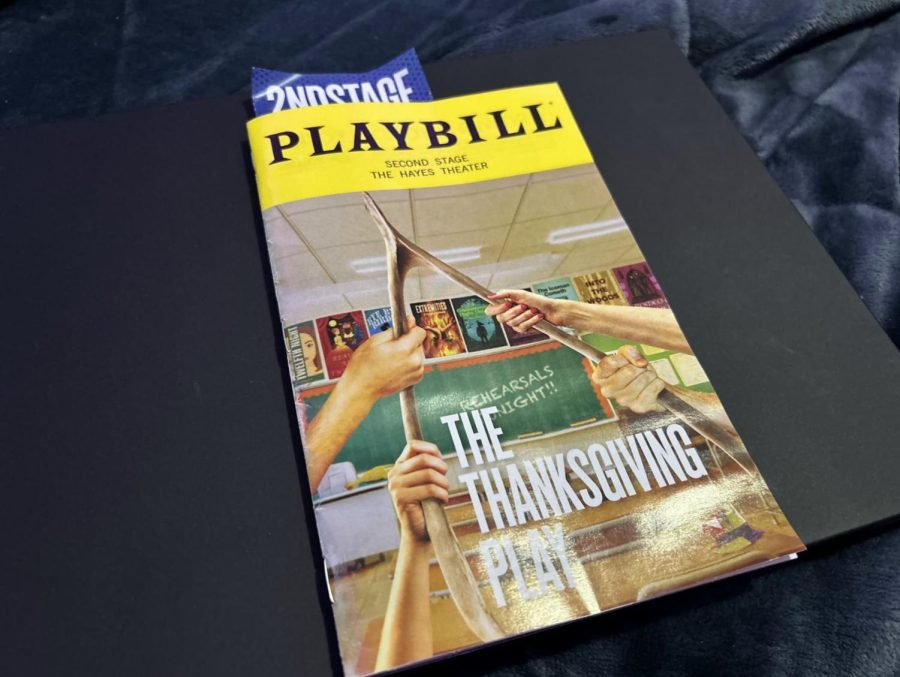Cultural appropriation and eventful disaster in ‘The Thanksgiving Play’
April 24, 2023
Anyone looking to be entertained and confused at the same time should see “The Thanksgiving Play” at the Hayes Theater.
Written by playwright Larissa FastHorse, Broadway’s first female Native American playwright, “The Thanksgiving Play” provides viewers with something quite unique. The experience was something like watching a crossover between “Glee” and “Schitt’s Creek.”
The cast, which is ironically made up of four white actors, tries to stage a play about Native Americans — with absolutely no input from said individuals.
The 90-minute production keeps viewers entertained throughout. Between elementary-aged children singing about a pumpkin-filled pumpkin patch to the tune of “Twelve Days of Christmas” in a pre-recorded video, to watching the cast members throw around a bloody Native American head as the classroom walls grow splattered with blood — which seemed like a flashback to Kathy Griffin’s Trump head — “The Thanksgiving Play” was more than just a Broadway show. Under all the slapstick, satirical comedy and awkward sexual scenarios was a truth: Native Americans and Indigenous people are poorly represented in American society and oftentimes have their history written and told by white individuals.
One of the lead characters, Logan, who is played by Katie Finneran, is the theater director. Logan has plans to make a play about Thanksgiving but to do it the “right way” hires Alicia, played by D’Arcy Carden, on the presumption that she is Native American and will be their “pass” to stage the production.
With the help of Jaxton and Caden, played by Scott Foley and Chris Sullivan respectively, the four attempt to create a politically correct production about Native Americans just in time for Native American Heritage Month.
Carden does a great job at playing an oblivious and naïve actress who is later revealed to not be Native American but describes herself as “ethnically ambiguous.” Foley plays the zen, breathe-in-breathe-out teacher who is focused on being politically correct throughout his performance. At one point he even dons a face covered in blue makeup, like Mel Gibson in “Braveheart.” Talk about dedication.
The quartet, despite trying their best to come up with a great production, fall short. It becomes clear to the audience as to why people other than Native Americans cannot stage a production about Native Americans.
The set itself gives the audience an idea of how hard the characters try to come off as inclusive. The classroom is filled with pro-diversity posters, which scream “try-hard.” The serious observer will notice a Malala poster in the back.
The production does have its comedic bits, but many times the audience’s laughter was funnier than the production itself.
Some scenes, intended as humorous, lacked in this category. The pre-recorded clips of the school-aged children singing or speaking may have been the highlight of the production.
One clip that stood out was of a Native American group of female teens and one boy singing what seemed to be a type of heavy metal music. It was one of the entertaining parts of the production and gave Taika Waititi’s “Reservation Dogs” vibes.
Despite the production’s comedic faults, the show did get one thing right — Native American history simply cannot be authentically told by white individuals. Leave that to Native Americans, or in this case, Larissa FastHorse, who shows us why it can’t be done — and just what might happen if it’s attempted.
“The Thanksgiving Play” will be on through June 4. If satire is your cup of tea, you won’t want to miss this one-of-a-kind production.






